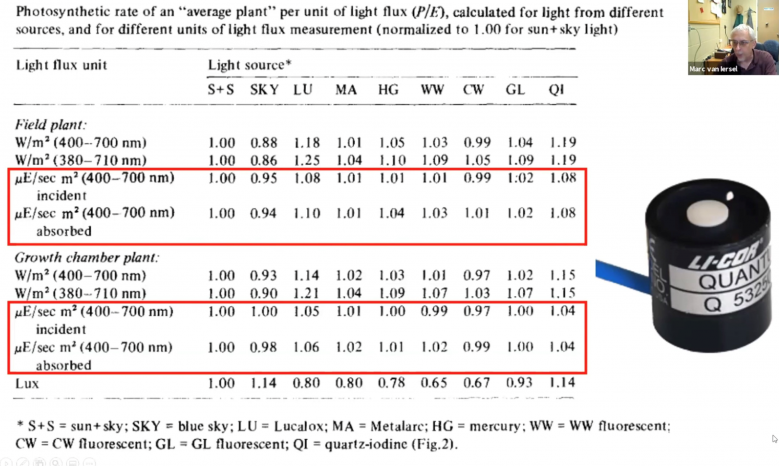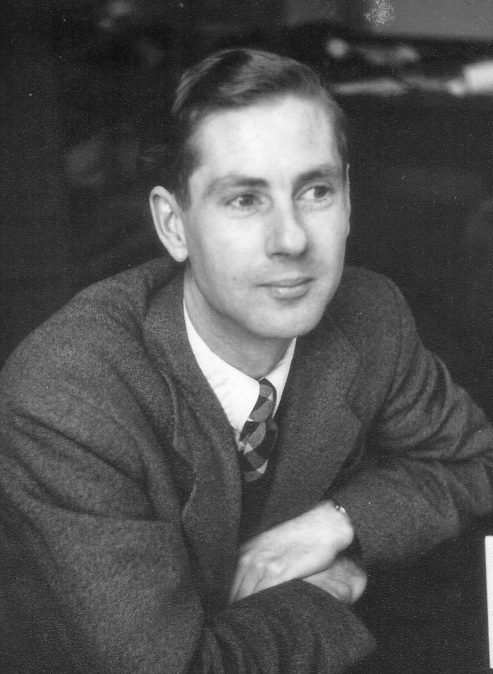What is Photosynthetically Active Radiation?
In this section for submissions by our Fellows, Dr John Troughton FRSNZ explains his earlier work measuring 'light standards' in photosynthesis and plant growth with late New Zealand physicist Keith McCree, who founded the term Photosynthetically Active Radiation (PAR). He now issues a call to action to plant scientists to contribute to a revision of how to measure PAR.
This is a call to action for plant scientists.
In 1964 the late Keith McCree was a physicist in New Zealand who specialised in street lighting. Today he is remembered as the founder of the term “Photosynthetically Active Radiation” and its measurement. His research table in 1971 is a classic for teaching budding scientists. But what is PAR? How should it be measured? Is it possible to standardise it universally?
When I first met Keith I was training as an electron microscopist and comparing wax on the leaves of wheat for wheat breeding purposes. The only place to grow them in Wellington was in controlled growth chambers with artificial light. Keith and I then spent many days talking about how we should measure the light from the lamps vs sunlight for plants. Our decision was, we couldn’t, as there was no instrument that could do it…
The beginnings
We then took a visit to the NZ Met Service to discuss it with them and came away with two spherical calibrated radiometers. One had to have a filter put on it to measure what we decided was the “right” wavelengths for photosynthesis and plant growth. So the “right” filter in flat glass was found but forming and perfectly grinding a half spherical glass dome to fit over it wasn’t trivial, only Norman Rumsey at the DSIR saved us!! It took him 6 months and problems with flaws in the glass but the 400-700nm filter worked a treat.
By standardised comparative measurements aided by the NZ Met Service in diffuse and direct sunlight, sunny, cloudy and or wet days, in the open or under trees, showed that 400-700nm PAR filtered radiation was not a standard ratio of the standard Met Office radiation measurements. The implications of this were enormous for all field measurements involving plants.
But how did our PAR relate to photosynthesis and plant growth? With all the great wheat plants I had growing I thought this would be easy to answer. Not so. In a wheat canopy, there are different levels of light, different levels of light filtered through leaves, different levels of direct light and light bounced off other leaves. And all of this outdoors with the sun going behind the clouds and sun flecks. The problem of measuring light in the field in natural ecosystems or fields, in canopies or under shade, with all these variables is still with us.
For the precision we needed, we retreated to the growth chambers. In addition, we chose a plant, white clover, with a leaf horizontal with the light, without overlapping and shading leaves, and measured leaf and root initiation, growth and death. This allowed precise measurements of the light available to the plant. Also CO2 exchange and DM was measured on white clover at different light levels with properly measured PAR. This was then reported:
McCree, K.J. and Troughton, J.H. 1966. Prediction of growth rate at different light levels from measured photosynthesis and respiration rates. Plant Physiology 41: 559-566. Also Non-Existence of an Optimum Leaf Area Index for the Production Rate of White Clover Grown Under Constant Conditions. K.J.McCree, J.H.Troughton. Plant Physiology, Volume 41, Issue 10, December 1966, Pages 1615–1622, https://doi.org/10.1104/pp.41.10.1615
The standards
The journey had started. Keith then completed the definitive work in 1971 as shown in his table:


Keith Jeffrey McCree 1927-2014
The future
Today we are requesting all NZ plant scientists to consider the need for revision of the “light standards” in photosynthesis and plant growth. We call out to have your say, whoever, wherever; ecologists, physiologists, molecular biologists, active inside or outside, in natural sites, cultivated fields, protected or vertical farms, on a wide variety of plants.
See the latest summary of the discussion that is underway - active engagement is encouraged. Extended Photosynthetically Active Radiation ePAR? Is this the future?
